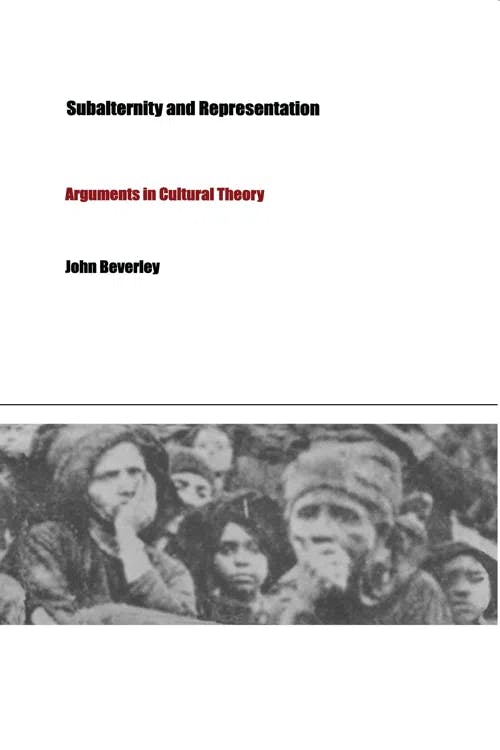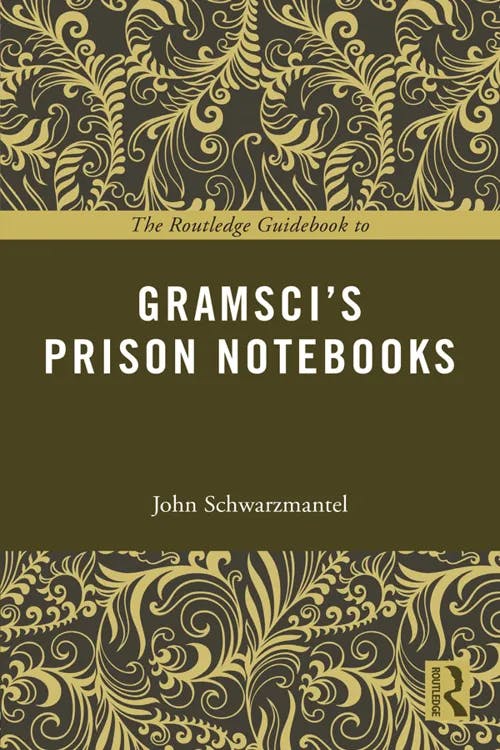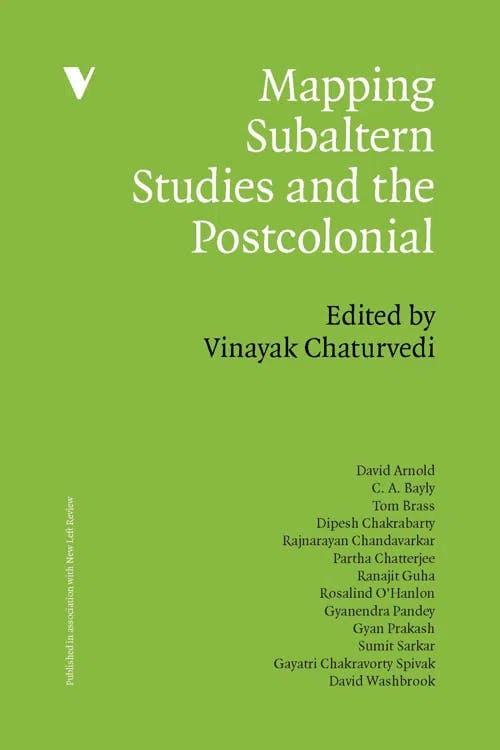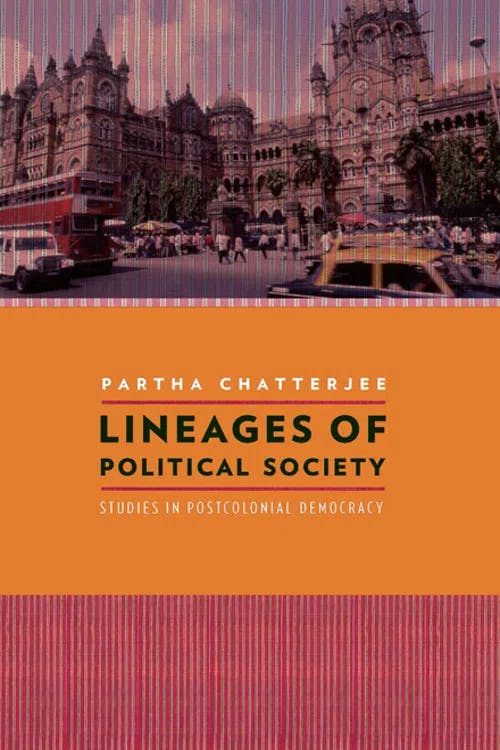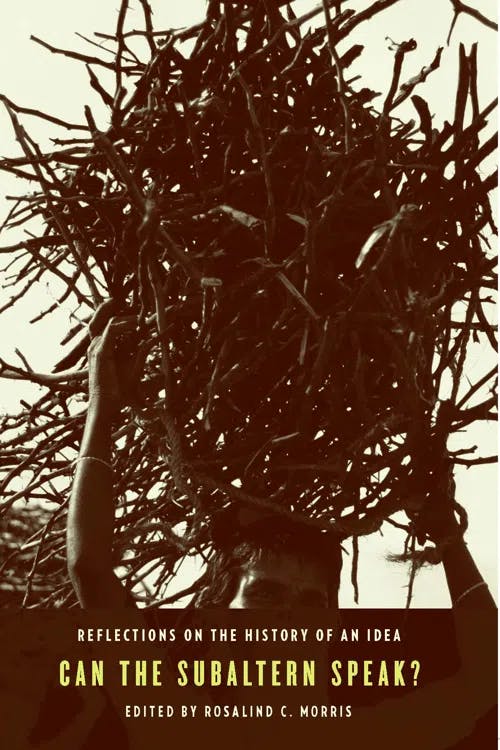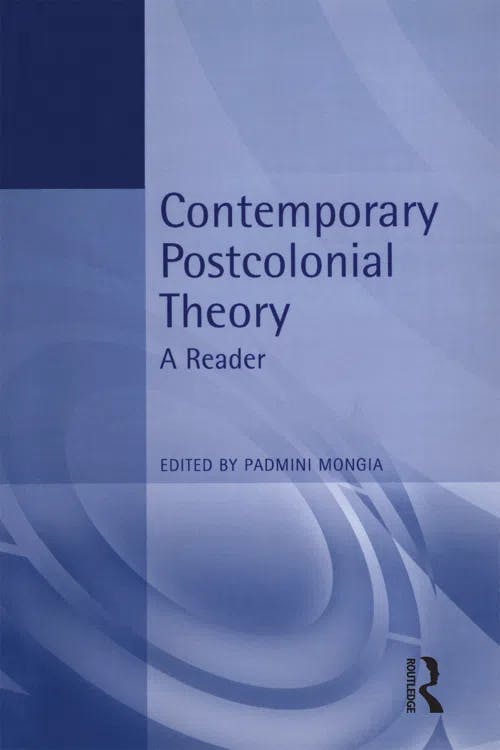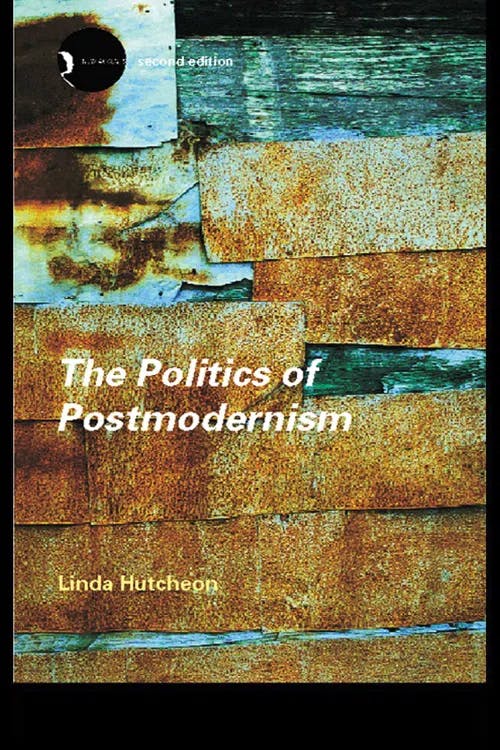What are Subaltern Studies?
PhD, English Literature (Lancaster University)
Date Published: 11.10.2023,
Last Updated: 16.01.2024
Share this article
Who is the subaltern?
The subaltern, within postcolonial studies, refers to a person or group excluded from the colonial elite due to their low social, political, and economic status. To be a subaltern is not simply to be othered. The subaltern lacks visibility and voice completely, pushed to the margins and excluded by both the self (colonizer) and the other. Colonization creates such groups by further displacing and erasing the identities of those who were already socially excluded. Scholars working within subaltern studies tend to focus on subaltern groups and individuals in South Asia, primarily India. Indian subaltern groups include rural Indian women, hijras (a third gender community), and the “untouchable” caste.
As John Beverley, founder of the Latin American Subaltern Studies Group, succinctly puts it,
Subaltern studies is about power, who has it and who doesn’t, who is gaining it and who is losing it. Power is related to representation: which representations have cognitive authority or can secure hegemony, which do not have authority or are not hegemonic. (1999)
John Beverley
Subaltern studies is about power, who has it and who doesn’t, who is gaining it and who is losing it. Power is related to representation: which representations have cognitive authority or can secure hegemony, which do not have authority or are not hegemonic. (1999)
The term “subaltern” was first used by the Marxist philosopher Antonio Gramsci in his Prison Notebooks, then adopted in the 1980s by Indian historian Ranajit Guha, who went on to establish the Subaltern Studies Group (also known as the Subaltern Studies Collective). The initial aim of the group was to write a history “from below,” which countered the predominant narratives of British colonizers and the Indian bourgeois nationalists that had emerged during the colonial period and continued after India’s independence. It is worth noting that not all those who work within subaltern studies are members of the Subaltern Studies Group.
Though many scholars had engaged with the figure of the subaltern and subaltern history, the position of the subaltern (specifically the subaltern woman) was popularized in Gayatri Chakravorty Spivak’s groundbreaking 1985 essay “Can the Subaltern Speak?”
This guide will explore the beginnings of subaltern studies as a discipline and some of the key areas within this field including the subaltern peasantry in India, gender, and the line between recovering subaltern histories and “speaking for” subaltern groups in Western academia.
From Gramsci to Guha: the creation of the Subaltern Studies Group
To fully understand the development of subaltern studies, we need to first turn to Gramsci. For Gramsci, the subaltern referred to groups in society who were oppressed by hegemonic power, such as peasants or workers. Gramsci was interested in the history of subaltern groups from their own perspectives, acknowledging that “history” is often solely the history of the elite powers. Gramsci discusses this in Prison Notebooks, a series of collected essays, written between the years of 1929–35 when he was imprisoned under the Italian fascist regime. Gramsci argues that “a new social force” that existed prior to the First World War could no longer be ignored (Selections from the Prison Notebooks, 2005). As John Schwarzmantel summarizes,
[Gramsci’s] fundamental argument in the Prison Notebooks is to investigate the process through which a collective will could emerge, a collective will formed by hitherto subordinate groups aiming to transform the conditions of their subaltern situation. (2014)
John Schwarzmantel
[Gramsci’s] fundamental argument in the Prison Notebooks is to investigate the process through which a collective will could emerge, a collective will formed by hitherto subordinate groups aiming to transform the conditions of their subaltern situation. (2014)
Gramsci’s use of “subaltern” differs from its current, postcolonial usage as, for Gramsci, it can be used interchangeably with “proletariat.” But a significant element of Gramsci’s view of the subaltern is reflected in our modern understanding: the idea of heterogeneity. In Prison Notebooks, Gramsci argues that the “subaltern classes, by definition, are not unified and cannot unite until they are able to become a ‘State’” (“History of the Subaltern Classes,” excerpted in Media and Cultural Studies: Keyworks, 1971, [2009]).
Gramsci lays out a six-point plan for studying subaltern groups and their history. He argues that historians need to focus on:
1. “the objective formation of subaltern groups”
2. “their active or passive affiliation with the dominant political groups”
3. the “birth of new parties of the dominant groups” created to control the subaltern groups
4. “the formations which the subaltern groups themselves produce, in order to press their claims of a limited and partial character”
5. “new formations that assert the autonomy of the subaltern groups, but within the old framework”
6. formations which assert the “integral autonomy” of subaltern groups, such as those related to trade unions.
(1971, [2009])
As George Hoare and Nathan Sperber point out,
the problematic of the investigation of the history of subaltern groups in South Asia in the Gramscian sense has proved to be enormously generative [...]. (2015)
George Hoare and Nathan Sperber
the problematic of the investigation of the history of subaltern groups in South Asia in the Gramscian sense has proved to be enormously generative [...]. (2015)
Gramsci’s work was essential in the formation of subaltern studies as he encouraged scholars to look beyond economics and examine other structures within society that reinforce hegemony such as schooling.
Following Gramsci’s prioritization of a history from below, the Subaltern Studies Group (SSG) was created. The SSG refers to a collection of postcolonial scholars exploring the historiography and identity of subaltern groups. Subaltern Studies also refers to the 12 editions of collected essays by members of the group, written between 1982 and 2005. Guha writes, in his preface to Subaltern Studies 1 , that the aim of this emerging field was
to promote a systematic and informed discussion of subaltern themes in the field of South Asia studies, and thus help to rectify the elitist bias characteristic of much research and academic work in this particular area. (1982, [1999])
Many members of the Subaltern Studies Group addressed this gap, producing a wealth of resources on Indian peasantry during the colonial period.
Making history: Indian peasantry and national identity
Guha’s Elementary Aspects of Peasant Insurgency in Colonial India (1983) proved to be the foundational document of the Subaltern Studies Group. Focusing on previously negated voices in historic rebellions, Guha explores the elements of rebel consciousness during colonial rule in India.
Guha’s text also illustrated a clear distinction between the work of the Subaltern Studies Group and Gramsci’s writing on the subaltern. In addition to rethinking what constitutes the “subaltern” (i.e., a voiceless other, rather than a general term for the working classes), Guha also challenged Gramsci’s view that there was little evidence of autonomy in peasant rebellions. Gramsci did not observe, for example, the proletariat generating their own leadership or managing their demands in an organized and effective way. Conversely, while acknowledging the powers of colonial hegemony, postcolonial critics such as Guha felt Gramsci’s view was not reflective of colonial India. As David Arnold points out in “Gramsci and Peasant Subalternity in India,”
Guha identifies the subaltern domain of politics as including a wide variety of generally autonomous modes of thought and action, particularly expressed through rebellions, riots and popular movements. It is implied [...] that these are the political expression of a subaltern peasant culture and world view which is in itself largely autonomous from that of the elite. (Arnold, in Mapping Subaltern Studies and the Postcolonial, 2012)
Edited by Vinayak Chaturvedi
Guha identifies the subaltern domain of politics as including a wide variety of generally autonomous modes of thought and action, particularly expressed through rebellions, riots and popular movements. It is implied [...] that these are the political expression of a subaltern peasant culture and world view which is in itself largely autonomous from that of the elite. (Arnold, in Mapping Subaltern Studies and the Postcolonial, 2012)
However, one major challenge Guha faced is trying to access subaltern history when the majority of historical documents and secondary research have been written by colonial elites or the Indian bourgeois-elite. Guha writes,
How then are we to get in touch with the consciousness of insurgency when our access to it is barred thus by the discourse of counter-insurgency? […] For counter-insurgency, which derives directly from insurgency and is determined by the latter in all that is essential to its form and articulation, can hardly afford a discourse that is not fully and compulsively involved with the rebel and his activities. (Elementary Aspects of Peasant Insurgency in Colonial India, 1983, [1999])
Indeed, there are many challenges in trying to recover subaltern history:
- As subaltern classes are typically silenced, there will be substantially less written about or by these groups (many of whom may not be literate).
- The Eurocentric nature of schooling in South Asia during colonial rule renders it difficult to access these narratives.
- Attempting to recover the voice of the subaltern may result in another problem: speaking “for” the subaltern or filtering their experiences through another Westernized perspective.
Guha attempts to mitigate this bias and produce a subaltern history of peasant rebellions by referring to numerous court transcripts and official documents. However, Partha Chatterjee stresses that
[...] one of the key findings of the early phase of Subaltern Studies was that the state was always a distant entity in peasant consciousness. Peasants generally wanted to have nothing to do with magistrates or courts, police stations or hospitals. In the same way, the relation of the urban poor, many of whom were migrants from the villages, to the agencies of the state was also distant. (2011)
Partha Chatterjee
[...] one of the key findings of the early phase of Subaltern Studies was that the state was always a distant entity in peasant consciousness. Peasants generally wanted to have nothing to do with magistrates or courts, police stations or hospitals. In the same way, the relation of the urban poor, many of whom were migrants from the villages, to the agencies of the state was also distant. (2011)
Not only are sources difficult to obtain, Guha highlights, but Indian history has for generations been written by colonizers and the Indian elite which reinforced Westernized values and justified colonization. In “On Some Aspects of the Historiography of Colonial India,” Guha argues that “the histography of Indian nationalism has for a long time been dominated by elitism – colonialist elitism and bourgeois-nationalist elitism” (in Mapping Subaltern Studies and the Postcolonial, 2012). Guha goes on to state that,
Both these varieties of elitism share the prejudice that the making of the Indian nation and the development of the consciousness – nationalism – which informed this process, were exclusive or predominantly elite achievements. In the colonialist and neocolonialist historiographies these achievements are credited to British colonial rulers, administrators, policies, institutions and culture; in the nationalist and neo-nationalist writings – to Indian elite personalities, institutions, activities and ideas. (2012)
Indian national identity is, therefore, erased as the formation of the Indian nation becomes accredited entirely to British occupation. This reenvisioning of history and reinforcement of British colonial values occurs through the education system. As Sudipta Kaviraj points out, Indians students were exposed to a “more monolithic” rationalist culture than the “more inflected and critically engaged form in Europe”:
the curricula of Western education contained not only theoretical tools, resources, and techniques which could be applied to historical material critically to appraise and control them; they also contained and pressed upon their students a narrative of universal history, assigning values and places to civilizations. (2010)
Sudipta Kaviraj
the curricula of Western education contained not only theoretical tools, resources, and techniques which could be applied to historical material critically to appraise and control them; they also contained and pressed upon their students a narrative of universal history, assigning values and places to civilizations. (2010)
Kaviraj argues that this narrative served to legitimize imperialist discourse. Kaviraj references Indian novelist and poet Bankimchandra Chattopadhyay’s thoughts on “the asymmetry between Europeans and Indians on the question of history”:
‘If Europeans go duck-shooting, histories are duly composed of the affair, but a whole nation of Bengalis do not have a history to themselves.’ And further: ‘The Bengalis must have a history; or else, they would never become human beings.’ (Chattopadhyay, 1965; quoted in Kaviraj, 2010)
A people needs a history, Kaviraj argues, to provide “an account, mortifying and uplifting, of their collective self” (2010).
This lack of history and sense of self for Indian subaltern groups is further discussed by Dipesh Chakrabarty. In “Postcoloniality and the Artifice of History,” Chakrabarty writes that Indian history is discussed in terms of absence, construed as a “historic failure of the nation to come to its own” (in Contemporary Postcolonial Theory, 2021). Chakrabarty argues that this problematic approach to subaltern historiography translates into “inadequacy”: India, under imperialist ideology, is in need of civilizing, since the “Indian was always a figure of lack” (2021). We can see similar discourses emerging in the division between the West and the Middle and Far East more broadly. (For more information, see our guide “What is Orientalism?”)
In order to move away from Eurocentric views of history, subaltern studies have had to work outside of conventional (and easily accessible) sources. As Gyanendra Pandey explains, while the narratives preserved in archives are overwhelming controlled by the ruling class,
Lodged in the records found in these institutions, however, are fragments (traces) of many lost (and usually irrecoverable) narratives, prised out by a predatory official or observer from earlier (often unknown) contexts and situated in others: the statement of a ‘mute’ subject under trial; rumours heard in the bazaar; slogans shouted by rebels or rioters; [...] – testimony not only to the power of British rule and its appropriation of the treasures of layer upon layer of history, but to other presences and other pasts. (“Voices from the Edge,” in Mapping Subaltern Studies and the Postcolonial, 2012)
The subaltern woman: Spivak’s “Can the Subaltern Speak?”
According to Spivak, the ultimate subaltern subject is the subaltern woman who tends to experience more oppression than the subaltern man. Subaltern women, Spivak explains, have historically been subjected to colonial violence, as well as patriarchal violence in Hindu society. The presence of these two oppressive forces silences the subaltern woman, making it impossible for her to self-advocate. Spivak’s essay “Can the Subaltern Speak?” (1985) explores how the subaltern woman is denied her autonomy and voice, which continue to be erased by Western academic discourse.
Spivak’s first example of silencing the subaltern woman is the prohibition of the sati, a practice whereby a Hindu widow would burn herself alive on the pyre of her dead husband. When Britain came to India, they outlawed this practice. Spivak writes,
The abolition of this rite by the British has been generally understood as a case of ‘White men saving brown women from brown men’. (Spivak, in Can the Subaltern Speak? Reflections on the History of an Idea, 1985, [2010])
Edited by Rosalind C. Morris
The abolition of this rite by the British has been generally understood as a case of ‘White men saving brown women from brown men’. (Spivak, in Can the Subaltern Speak? Reflections on the History of an Idea, 1985, [2010])
Spivak identifies how pro-imperialists and colonizers believed the British were on a civilizing mission to India and saving Indian women. This thinking ideologically justified colonization and the imposition of British institutions and education. Spivak states,
Imperialism’s image as the establisher of the good society is marked by the espousal of the woman as object of protection from her own kind. How should one examine the dissimulation of patriarchal strategy, which apparently grants the woman free choice as subject? (1985, [2010])
Spivak points out that these women have been largely erased from this narrative and that ignoring the subaltern today is “to continue the imperialist project” (1985, [2010]).
Spivak further illustrates the voicelessness of the subaltern woman through the death of Bhuvaneswari Bhaduri, a young woman who hanged herself in North Calcutta in 1926. The motive behind the suicide confounded local authorities as Bhuvaneswari had been menstruating at the time and, as such, her suicide was not a response to an unplanned pregnancy. Nearly a decade later, it was revealed she was part of a group struggling for Indian independence. The group had tasked her with the assassination of a political figure. Unable to do this, Bhuvaneswari decided to kill herself. As Spivak explains,
Bhuvaneswari had known that her death would be diagnosed as the outcome of illegitimate passion. She had therefore waited for the onset of menstruation. [...] She generalized the sanctioned motive for female suicide by taking immense trouble to displace (not merely deny) in the physiological inscription of her body, its imprisonment within legitimate passion by a single male. (1985, [2010])
Despite the revelation of Bhuvaneswari’s political affiliations, her family believed the suicide was due to an illicit love affair, waving off other speculations. Her act was read as “absurd” and a result of “delirium,” rather than the planned, intentional, and political:
Bhuvaneswari Bhaduri’s suicide is an unemphatic, ad hoc, subaltern rewriting of the social text of sati-suicide [...] The subaltern as female cannot be heard or read. (Spivak, 1985, [2010])
Bhuvaneswari’s death shows that even when the subaltern woman goes to painstaking efforts to inscribe meaning or motivation to her actions, and profess her own subjectivity, such gestures go unheard by the colonial and patriarchal order.
Academia and the subaltern
One reason the subaltern fails to be heard is due to the epistemic violence committed by scholars. Epistemology analyzes how we obtain and trust knowledge, and epistemic violence is a term used in postcolonial studies to describe how the West produces discourse on colonized nations and colonized people and works to erode indigenous identities by controlling knowledge production — for example, through forced English schooling, or the adoption of English culture and history as the global baseline that colonized people must adapt to. Relatedly, feminist epistemology considers the epistemic injustice of how women are excluded from knowledge production and treated as untrustworthy or unviable sources of knowledge.
As Beverley highlights,
Gayatri Spivak formulated the problem concisely: If the subaltern could speak—that is, speak in a way that really mattered to us—then it wouldn’t be subaltern. [...] [The subaltern] cannot be represented adequately by academic knowledge because academic knowledge is a practice that actively produces subalternity [...]. (1999)
John Beverley
Gayatri Spivak formulated the problem concisely: If the subaltern could speak—that is, speak in a way that really mattered to us—then it wouldn’t be subaltern. [...] [The subaltern] cannot be represented adequately by academic knowledge because academic knowledge is a practice that actively produces subalternity [...]. (1999)
Scholars of subalternity often address the problematic nature of attempting to give voice to the subaltern. Some argue this is another form of “speaking for” the subaltern and filtering their words through Eurocentric understanding. Spivak is one such scholar who has shed light on this issue. Returning to her 1985 essay, Spivak begins her discussion of the voicelessness of the subaltern by addressing an interview between French philosophers, Michel Foucault and Gilles Deleuze (Intellectuals and power: A conversation between Michel Foucault and Gilles Deleuze, 1972).
In this interview, Foucault and Deleuze discuss power, the self, and desire in a way that Spivak views as largely uncritical and inattentive to the bigger picture of marginalization and the impacts of colonialism. Spivak argues that Deleuze and Foucault ignore testimonies from marginalized groups, the question of ideology, how power structures exist at the macro and not just the micro level, and their own implication in intellectual and economic history. Foucault, for example, says that those in prison can offer anti-penal discourses, speaking out against the system as a form of resistance. These accounts can help transform power structures. However, Spivak argues that Foucault’s thinking underestimates the power of ideology as it suggests that everyone has the power to speak — and the ability to speak to be heard and taken as authoritative truth. Academics such as Foucault and Deleuze reproduce these marginalized voices in their own writing to explain how power works. This approach, however, only reinforces the system by channeling the voice of the subaltern through elite, Western groups.
For Spivak, the anonymous subject of Foucault and Deleuze’s work is universalized and, as such, has no geopolitical roots. By erasing the identity of the subaltern and homogenizing all marginalized groups, Western philosophers make generalizations about how resistance for subaltern groups can be achieved. Moreover, they fail to consider wider power structures which bear upon an individual’s identity. For example, laborers working 30-hour days in sweatshops do not have the potential to assess their identity in relation to colonial discourse and break free from power systems; their energy is entirely used up by capitalism.
Spivak accuses Foucault and Deleuze of committing epistemic violence by projecting their Eurocentric knowledge onto colonized countries.
The perspectives touted by famous philosophers have real impacts, particularly in higher education. In “Poststructuralism, Marginality, Postcoloniality and Value,” Spivak writes that when academics teach “marginality,” their first source is cultural politics of colonialism, usually referring to Frantz Fanon and Edward Said. Spivak explains the issue with this approach:
Said’s book was not a study of marginality, not even of marginalization. It was the study of the construction of an object, for investigation and control. The study of colonial discourse, directly released by work such as Said’s, has, however, blossomed into a garden where the marginal can speak and be spoken, even spoken for. It is an important (and beleaguered) part of the discipline now. (Spivak, in Contemporary Postcolonial Theory, 2021)
Edited by Padmini Mongia
Said’s book was not a study of marginality, not even of marginalization. It was the study of the construction of an object, for investigation and control. The study of colonial discourse, directly released by work such as Said’s, has, however, blossomed into a garden where the marginal can speak and be spoken, even spoken for. It is an important (and beleaguered) part of the discipline now. (Spivak, in Contemporary Postcolonial Theory, 2021)
Spivak is identifying how the idea that the subaltern can speak in such studies of colonial discourse is a contradiction to the very definition of what makes a person part of a subaltern class. The act of speaking for the subaltern further filters their voice through Western references of understanding. potentially resulting in misinterpretations of language or signifiers in different cultures. Moreover, the reliance on the same, though groundbreaking, authors means that there is still a very narrow focus when looking at the history of subaltern groups.
For example, Chakrabarty discusses Linda Hutcheon’s The Politics of Postmodernism, wherein Hutcheon is discussing Salman Rushdie’s Midnight’s Children (1981). Hutcheon writes,
Though Saleem Sinai [of Midnight's Children] narrates in English ... his intertexts for both writing history and writing fiction are doubled: they are, on the one hand, from Indian legends, films, and literature and, on the other, from the West – The Tin Drum, Tristram Shandy, One Hundred Years of Solitude, and so on. (1989, [2003])
Linda Hutcheon
Though Saleem Sinai [of Midnight's Children] narrates in English ... his intertexts for both writing history and writing fiction are doubled: they are, on the one hand, from Indian legends, films, and literature and, on the other, from the West – The Tin Drum, Tristram Shandy, One Hundred Years of Solitude, and so on. (1989, [2003])
Chakrabarty notes how, despite acknowledging Rushdie’s Indian references, Hutcheon
teases out only those references that are from ‘the West.’ The author is under no obligation here to be able to name with any authority and specificity the ‘Indian’ allusions that make Rushdie's intertexuality ‘doubled.’ This ignorance, shared and unstated, is part of the assumed compact that makes it ‘easy’ to include Rushdie in English department offerings on postcolonialism. (2021)
The inclusion of Indian writers in the curriculum, therefore, becomes an empty gesture. This lack of engagement with Rushdie’s array of Indian references exemplifies how non-Western culture is simplified and packaged in a Eurocentric way to make it accessible to the Western reader.
Criticism of the Subaltern Studies Group
There have been several criticisms made against scholars within the Subaltern Studies Group, from their failure to adequately give agency to the oppressed to the group’s digression from its founding tenets. In Postcolonial Studies, Benita Parry argues that,
From the discourse of Sati, Spivak derives large, general statements on woman’s subject constitution/object formation in which the subaltern woman is conceived as a homogeneous and coherent category, and which culminate in a declaration on the success of her planned disarticulation. [...] Spivak in her project gives no speaking part to the colonized, effectively writing out the evidence of native agency recorded in India’s two-hundred-year struggle against British conquest and the Raj – discourses to which she scathingly refers as hegemonic nativist or reverse ethnocentric narrativization. (2004)
Benita Parry
From the discourse of Sati, Spivak derives large, general statements on woman’s subject constitution/object formation in which the subaltern woman is conceived as a homogeneous and coherent category, and which culminate in a declaration on the success of her planned disarticulation. [...] Spivak in her project gives no speaking part to the colonized, effectively writing out the evidence of native agency recorded in India’s two-hundred-year struggle against British conquest and the Raj – discourses to which she scathingly refers as hegemonic nativist or reverse ethnocentric narrativization. (2004)
Parry argues that subaltern women have indeed self-advocated in numerous ways and that by focusing purely on hegemonic power sources, Spivak has failed to take this into account. However, Spivak clarifies in a later interview that when she says the subaltern cannot speak, she means the subaltern cannot speak in a way which the West can truly hear and understand (Spivak, “Critical Intimacy: An Interview with Gayatri Chakravorty Spivak”, 2016).
One essay on the problems with the Subaltern Studies Group comes from its ex-member, Sumit Sarkar. In “The Decline of the Subaltern in Subaltern Studies,” Sarkar laments the changing direction of the group from its Marxist origins. Indeed, earlier editions of Subaltern Studies tended to focus on peasantry and class, whereas the later collections approached a more diverse range of topics. Sarkar argues,
With the withering of hopes of radical transformation through popular initiative, conceptions of seamless, all-pervasive, virtually irresistible power-knowledge have tended to displace the evocation of moments of resistance central to the histories from below of the 1960s and 1970s. (In Mapping Subaltern Studies and the Postcolonial, 1997, [2012])
Sarkar argues that there has been a move towards Western discourse, resulting in a reinforcement of the subaltern-colonizer divide.
The legacy of subaltern studies
Subaltern studies have been instrumental in providing a robust account of Indian history from below, a much-needed counternarrative to imperialist discourse. Ideas from the original SSG continue to be generative as we see new collections on subalternity emerge, such as Samraghni Bonnerjee’s edited collection Subaltern Women's Narratives (2020) and Nissim Mannathukkaren’s Communism, Subaltern Studies and Postcolonial Theory (2021). New research has also incorporated the concept of the subaltern outside of South Asian studies. In Shauna Knox’s The Black Subaltern, for example, the author combines her own experience as a Jamaican migrant with theory to provide insight into the conditions of Black subalternity.
Subaltern studies has produced an impressive legacy of scholarship on, among other topics, capitalism, medicine and science, and ethnography. By recontextualizing Indian history from outside of the colonial archive, the history and culture of the subaltern classes have began to emerge. Collected through fragmentary documents, historians and critics of subaltern historiography have been able to reappraise cultural moments and historic events in light of these newfound voices. The subaltern studies project enables the voices previously oppressed and silenced by dominant power structures to emerge.
Further reading on Perlego
Provincializing Europe: Postcolonial Thought and Historical Difference (2009) by Dipesh Chakrabarty
History at the Limit of World-History (2003) by Ranajit Guha
Decoding Subaltern Politics: Ideology, Disguise, and Resistance in Agrarian Politics (2012) by James C. Scott
Who is the subaltern in simple terms?
Who are some key theorists in subaltern studies?
What is the Subaltern Studies Group (SSG)?
Bibliography
Arnold, D. (2012) “Gramsci and Peasant Subalternity in India,” in Chaturvedi, V. (ed) Mapping Subaltern Studies and the Postcolonial. Verso. Available at: https://www.perlego.com/book/730873/mapping-subaltern-studies-and-the-postcolonial-pdf
Beverley, J. (1999) Subalternity and Representation: Arguments in Cultural Theory. Duke University Press Books. Available at: https://www.perlego.com/book/1467152/subalternity-and-representation-arguments-in-cultural-theory-pdf
Bonnerjee, S. (ed.) (2020) Subaltern Women’s Narratives: Strident Voices, Dissenting Bodies. Routledge. Available at: https://www.perlego.com/book/2038823/subaltern-womens-narratives-strident-voices-dissenting-bodies-pdf
Chakrabarty, D. (2021) “Postcoloniality and the Artifice of History: Who Speaks for ‘Indian’ Pasts?,” in Mongia, P. (ed.) Contemporary Postcolonial Theory: A Reader. Routledge. Available at: https://www.perlego.com/book/2094470/contemporary-postcolonial-theory-a-reader-pdf
Chatterjee, P. (2011) Lineages of Political Society: Studies in Postcolonial Democracy. Columbia University Press. Available at: https://www.perlego.com/book/774913/lineages-of-political-society-studies-in-postcolonial-democracy-pdf
Chaturvedi, V. (ed.) (2012) Mapping Subaltern Studies and the Postcolonial. Verso. Available at: https://www.perlego.com/book/730873/mapping-subaltern-studies-and-the-postcolonial-pdf
Chibber, V. (2013) Postcolonial Theory and the Specter of Capital. Verso. Available at: https://www.perlego.com/book/731129/postcolonial-theory-and-the-specter-of-capital-pdf
Gramsci, A. (2009) “History of the Subaltern Classes,” excerpted in Durham, M. G. and Kellner, D. M. Media and Cultural Studies: Keyworks. Wiley-Blackwell. Available at: https://www.perlego.com/book/2763877/media-and-cultural-studies-keyworks-pdf
Gramsci, A. (2005) Selections from the Prison Notebooks. Lawrence Wishart.
Guha, R. (1999) Subaltern Studies. Oxford University Press.
Guha, R. (1999) Elementary Aspects of Peasant Insurgency in Colonial India. Duke University Press.
Hoare, G. and Sperber, N. (2015) An Introduction to Antonio Gramsci: His Life, Thought and Legacy. Bloomsbury Academic. Available at: https://www.perlego.com/book/807560/an-introduction-to-antonio-gramsci-his-life-thought-and-legacy-pdf
Hutcheon, L. (2003) The Politics of Postmodernism. Routledge. Available at: https://www.perlego.com/book/1614423/the-politics-of-postmodernism-pdf
Kaviraj, S. (2010) The Imaginary Institution of India: Politics and Ideas. Columbia University Press. Available at: https://www.perlego.com/book/775109/the-imaginary-institution-of-india-politics-and-ideas-pdf
Knox, S. (2022) The Black Subaltern: An Intimate Witnessing. Routledge. Available at: https://www.perlego.com/book/3483851/the-black-subaltern-an-intimate-witnessing-pdf
Mannathukkaren, N. (2021) Communism, Subaltern Studies and Postcolonial Theory: The Left in South India. Routledge India. Available at: https://www.perlego.com/book/2534456/communism-subaltern-studies-and-postcolonial-theory-the-left-in-south-india-pdf
Morris, R. (ed.) (2010) Can the Subaltern Speak? Reflections on the History of an Idea. Columbia University Press. Available at: https://www.perlego.com/book/775134/can-the-subaltern-speak-reflections-on-the-history-of-an-idea-pdf
Pandey, G. (2012) “Voices from the Edge,” in Chaturvedi, V. (ed.) Mapping Subaltern Studies and the Postcolonial. Verso. Available at: https://www.perlego.com/book/730873/mapping-subaltern-studies-and-the-postcolonial-pdf
Pandey, G. (2013) Subalternity and Difference: Investigations from the North and the South. Routledge. Available at: https://www.perlego.com/book/1607126/subalternity-and-difference-investigations-from-the-north-and-the-south-pdf
Parry, B. (2004) Postcolonial Studies: A Materialist Critique. Routledge. Available at: https://www.perlego.com/book/1618208/postcolonial-studies-a-materialist-critique-pdf
Rushdie, S. (2023) Midnight’s Children. Penguin.
Sarkar, S. (2012) “The Decline of the Subaltern in Subaltern Studies,” in Chaturvedi, V. (ed) Mapping Subaltern Studies and the Postcolonial. Verso. Available at: https://www.perlego.com/book/730873/mapping-subaltern-studies-and-the-postcolonial-pdf
Schwarzmantel, J. (2014) The Routledge Guidebook to Gramsci's Prison Notebooks. Routledge. Available at: https://www.perlego.com/book/1560453/the-routledge-guidebook-to-gramscis-prison-notebooks-pdf
Spivak G. C. (1985) ‘Can the subaltern speak? Speculations on widow-sacrifice’, Wedge ⅞.
Spivak, G. C. (2010) “Can the Subaltern Speak?,” in Morris, R. (ed.) (2010) Can the Subaltern Speak? Reflections on the History of an Idea. Columbia University Press. Available at: https://www.perlego.com/book/775134/can-the-subaltern-speak-reflections-on-the-history-of-an-idea-pdf
Spivak, G. C. (2021) “Poststructuralism, Marginality, Postcoloniality and Value,” in Mongia, P. (ed.) Contemporary Postcolonial Theory: A Reader. Routledge. Available at: https://www.perlego.com/book/2094470/contemporary-postcolonial-theory-a-reader-pdf
Interviews
Foucault, M. and Deleuze, G. (1972) “Intellectuals and power: A conversation between Michel Foucault and Gilles Deleuze.” Libcom. Available at: https://libcom.org/article/intellectuals-and-power-conversation-between-michel-foucault-and-gilles-deleuze
Spivak, G. and Paulson, S. (2016) “Critical Intimacy: An Interview with Gayatri Chakravorty Spivak.” Los Angeles Review of Books. Available at: https://lareviewofbooks.org/article/critical-intimacy-interview-gayatri-chakravorty-spivak/
PhD, English Literature (Lancaster University)
Sophie Raine has a PhD from Lancaster University. Her work focuses on penny dreadfuls and urban spaces. Her previous publications have been featured in VPFA (2019; 2022) and the Palgrave Handbook for Steam Age Gothic (2021) and her co-edited collection Penny Dreadfuls and the Gothic was released in 2023 with University of Wales Press.

